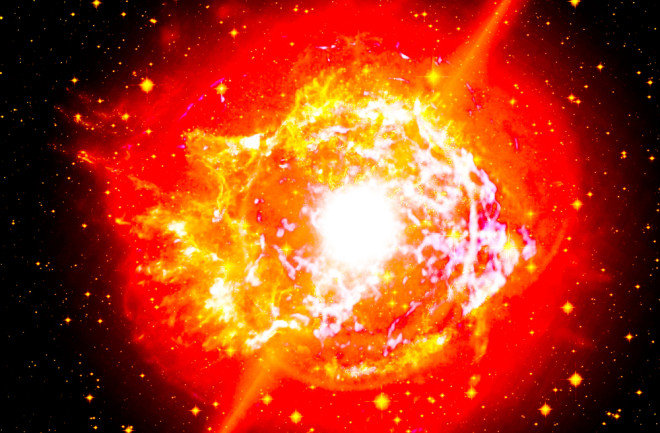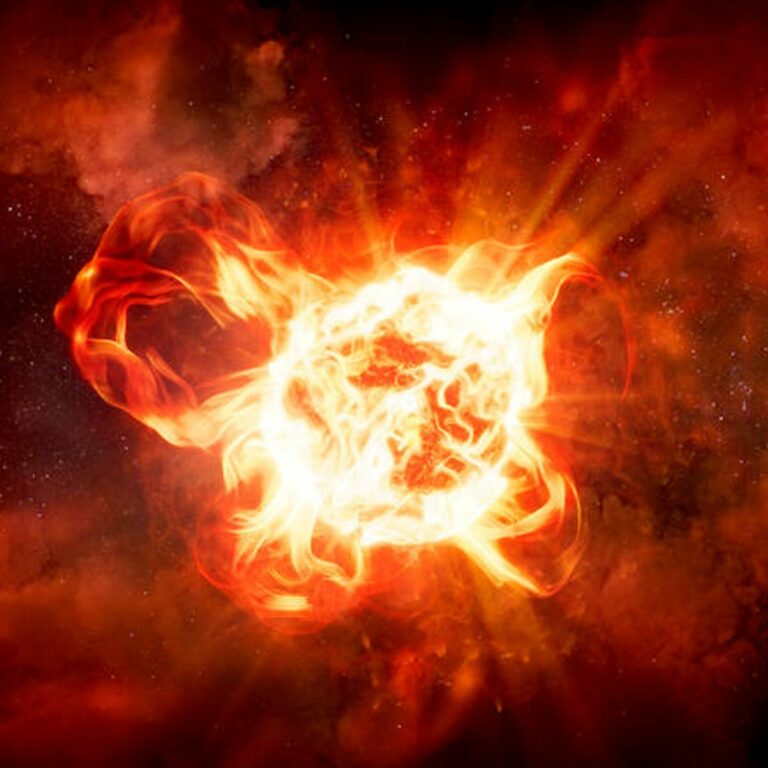When is Betelgeuse Expected to Undergo a Supernova?
For millennia, humanity has been intrigued by the enigmatic big, red troublemaker in our galaxy. Physicists now offer predictions on the imminent explosion of Betelgeuse.

When the late Sir Patrick Moore, president of the British Astronomical Association, ventured outside on a chilly, clear night, his customary gaze ascended to the sky, initiating his habitual vigil.
“Before anything else, I look at Orion,” he expressed regarding the constellation. “To make sure that Betelgeuse is still there in its familiar guise!”
Betelgeuse, positioned on the shoulder of the huntsman, derives its name from an Arabic term signifying the “giant’s shoulder.” The capricious supergiant star has consistently prompted vigilant observation. While many stars radiate stability for millions of years, this particular one is infamous for its erratic episodes of dimming, brightening, flaring, and other perplexing behaviors that baffle astronomers.
Since Moore’s passing in 2012, the situation has only deteriorated.
What is Betelgeuse?
Betelgeuse, a colossal star approximately 700 times larger than the sun, experienced a noteworthy event in 2019. NASA posits that a formidable plume erupted from within the star, propelling off a portion of its outer layer.
The expelled material, with a mass several times that of our moon, cooled in space, obstructing light from reaching Earth and causing a significant darkening of Betelgeuse, famously known as The Great Dimming. This celestial phenomenon, observed by backyard enthusiasts worldwide, persisted for a few months.
Following this dramatic event, Betelgeuse entered a turbulent phase expected to endure for at least another year or two. Its internal convection cells, responsible for the usual fluctuations in brightness, are now in disarray, resembling an unbalanced washing machine, according to NASA. At the outermost layer, the scarred surface is oscillating “like a plate of gelatin dessert.”
While the sun occasionally releases small amounts of material in a process known as a coronal mass ejection (CME), Betelgeuse’s expulsion was on an entirely different scale, being 400 billion times larger than the average CME.
When Will Betelgeuse Explode?
In recent times, the star has deviated from its usual, consistent 400-day cycle of brightening and dimming, adopting a much shorter and erratic pattern. The recent episodes of brightening have even sparked concerns that the aging star, situated approximately 650 light years away from Earth, might undergo a supernova, one of the most violent occurrences in the universe. However, scientists have reassured that such an event is likely to transpire in another 10,000 to 100,000 years.
In 2020, researchers from the Kavli Institute for the Physics and Mathematics of the Universe in Japan scrutinized Betelgeuse and determined that the star was still in the early stages of its helium-burning phase.
A press release emphasized, “Betelgeuse is not on the verge of exploding,” and furthermore, the star “is positioned too distantly from Earth for the eventual explosion to have a significant impact here.”
Will Betelgeuse Become a Black Hole?
As a massive star, Betelgeuse is expected to go through a dramatic end-of-life catastrophe that will produce either a neutron star or black hole and likely a show for any surviving observers on earth.
Before the catastrophe, Betelgeuse must burn through several different types of nuclear fuel. Starting with hydrogen, which it’s already fused into helium, the fuel for its current stage will make carbon. These reactions release large amounts of energy and send many, many photons out into the universe, including those that reached Moore’s eyes.
Betelgeuse’s next stages will happen quicker as its temperatures rise, sending the star down a slippery slope. Fusion will create oxygen, neon, silicon and finally iron, which accumulates in a huge core.
Betelgeuse Star Explosion
Ongoing reactions persist, depleting the star of its energy and disrupting the equilibrium between expansion and gravitational contraction. This imbalance leads to the star collapsing inwardly, setting off an extraordinary explosion known as a supernova.
During the core collapse, a shock wave emanates outward, compressing the adjacent stellar materials and facilitating the formation of uncommon elements like silver, tin, gold, uranium, mercury, and zinc.
This entire sequence of events releases an energy output 100 times greater than what our Sun is projected to emit over its 10-billion-year lifespan. The aftermath of this celestial spectacle leaves behind an exotic remnant in the form of either a black hole or a neutron star.
This article is republished from DiscoverMagazine under a Creative Commons license. Read the original article.
Do not forget to share your opinion with us to provide you with the best posts !




0 Comments